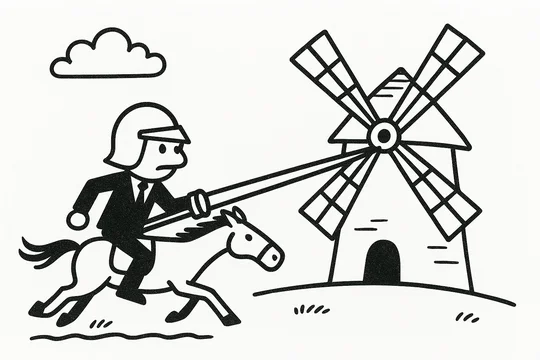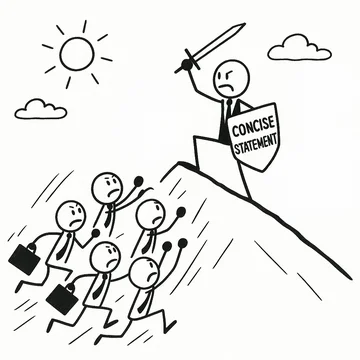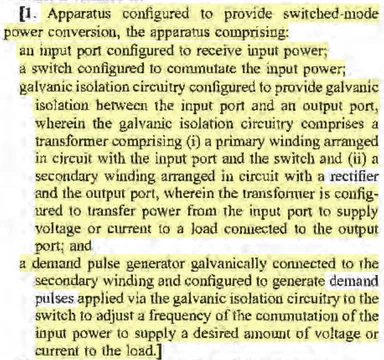
Back in 2021, Chief Judge Connolly instituted a new ranking procedure for summary judgment motions in his cases, in which parties rank their SJ motions and, if the top-ranked motion is denied, all lower-ranked motions are denied as well. The Court later expanded that procedure to encompass Daubert motions as well. Judge Williams has adopted it (for SJ motions only), and Judge Noreika has experimented with it—although at least one other judge has declined to adopt it.
To put the procedures in context, judges on the Court have long applied various measures to control the workload generated by summary judgment motions. Former Chief Judge Sleet, for example, required parties to request leave before filing summary judgment motions, and Judge Noreika has applied a similar procedure at times as well.
Up until an opinion issued last Thursday, I had not seen a party directly challenge these procedures. I think most attorneys figure that, if a Court can decline to address summary judgment entirely (as it often does in ANDA cases, for example), or can restrict it with page limits, why wouldn't it be able to put limits on how many SJ motions are filed?
The defendant in Bausch & Lomb Inc. v. SBH Holdings LLC, C.A. No. 20-1463-GBW (D. Del.), however, took a different view.
That case was originally assigned to Judge Stark, prior to his move to the Federal Circuit, and then to Judge Burke for scheduling, and ultimately to Judge Williams. On the way to Judge Williams, the cased picked up a Judge Burke-style scheduling order that did not require ranking summary judgment motions.
When the parties filed their motions and did not rank them, the Court clarified that Judge Williams' ranking procedures applied:
ORAL ORDER: The Court, having conferred with Judge Williams regarding the pending summary judgment motions, hereby ORDERS as follows: (1) Judge Williams wishes that his procedures for summary judgment motions be utilized in the case, which are as follows: Any party that files more than one summary judgment motion shall number each motion to indicate the order in which the party wishes the Court to review its pending motions. The first motion the party wishes the Court to consider shall be designated #1, the second motion shall be designated #2, and so on. The Court will review the party's summary judgment motions in the order designated by the party. If the Court decides to deny a motion filed by the party, barring exceptional reasons determined sua sponte by the Court, the Court will not review any lower ranked summary judgment motions filed by the party.
Id., D.I. 242. The Court gave the parties a week to rank their motions (which they did):
(2) As a result, by no later than one week from the date of this Order, the parties shall file a joint letter . . . confirming whether the current numbering of the summary judgment motions constitutes the order in which the parties wish the Court to review their respective pending motions (and if not, indicating the order in which the Court should review the pending summary judgment motions).
Id. But the defendant went a step further, filing a motion to strike the Court's own oral order implementing ranking from the docket. They raised three primary bases: prejudice, that it was contrary to the scheduling order at the time, and that it violates Rule 56. D.I. 245 at 1-3.
Judge Williams easily rejected each of the defendant's challenges. As to prejudice, the Court said that a discretionary denial of lower-ranked motions merely reflects the moving party's own choices:
Defendant fails to make, and in fact could not make, a clear showing that the Court's Summary Judgment Ranking Procedures "have resulted in actual and substantial prejudice" to Defendant. . . . Again, the Summary Judgment Ranking Procedures implemented in this action compel "the parties to focus on and identify their best arguments," which potentially reduces "the burden on the court," while still affording the Court "full view of the possible summary judgment issues." . . . That a litigant may expend resources briefing numerous motions for summary judgment some of which the Court may summarily deny after considering and denying a higher ranked summary judgment motion under its Summary Judgment Ranking Procedures merely reflects the litigant's strategic choice to rank higher summary judgment motions that either are not supported by the law, contain genuine disputes of material fact that preclude summary judgment, or are otherwise without merit.
Id., D.I. 286 at 7. As to the subsequent order violating the prior scheduling order, the Court simply pointed out that it can (and did) change a previous scheduling order:
[T]hat a scheduling order is in effect prior to the reassignment of a case to a new judge does not divest the new judge of his or her broad discretion and authority to manage his or her docket, including through amendment of that scheduling order, to achieve the efficient and expedient resolution of cases.In this case, and in all other patent cases before the current judge, the Court utilizes its Summary Judgment Ranking Procedures to facilitate such efficient and expedient resolution. Without such procedures, this already extremely busy Court would be buried without end in countless motions for summary judgment - many of which clearly have no merit and can be disposed of summarily - and would be required to delay scheduled trials.
Id. at 7-8. The Court also found that Rule 56 did not preclude its procedures:
Furthermore, the Court's Summary Ranking Procedures are consistent with Federal Rule of Civil Procedure 56 and the Court's Local Rules, neither of which guarantee litigants the right to file an unlimited number of motions for summary judgment or raise an unlimited number of grounds for summary judgment. Given that Defendant may, as procedurally and substantively appropriate, re-raise the arguments from its analyzed and denied summary judgment motions and its lower-ranked and summarily denied motions for summary judgment during or after trial (for example, in motions for judgment as a matter of law), there is no "substantial prejudice" to Defendant.
Defendant's remaining arguments are unavailing. First, Defendant cites Kowalchuck v. Metro. Transp. Auth., 94 F.4th 210, 215 (2d Cir. 2024) for the proposition that "a court has no power to prevent a party from filing pleadings, motions or appeals authorized by the Federal Rules of Civil Procedure." . . . However, as described above, Federal Rule of Civil Procedure 56 does not authorize an unlimited number of motions for summary judgment. Second, Defendant contends that "[p]ublic policy favors resolution of cases by means of summary judgment." . . . However, such public policy does not divest the Court of its broad discretion and authority to manage its docket.
Id. at 8. The Court also addressed and rejected various other challenges to the procedures.
Finally, the Court noted the sloppiness of the defendant's brief:
The Court notes that Defendant's letter briefing in support of its Motions, consistent with Defendant's previous briefing in this action, contains flagrant typos and inconsistent formatting (including at least three different font colors) that do not aid Defendant's cause.
Id. at 10 n.1. If you're curious about what it takes to warrant a note like this, you can see the brief attached below. The three colors are dark blue, gray, and black. It looks to me like the color issues may stem from cutting-and-pasting text from PACER notification e-mails:

There is another shade of gray later in the draft as well. As far as typos, this blog is in absolutely no position to be throwing stones (and, as always, please always free free to let us know if you see mistakes or typos on this blog).
If you enjoyed this post, consider subscribing to receive free e-mail updates about new posts.




